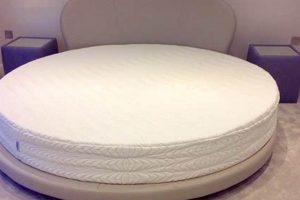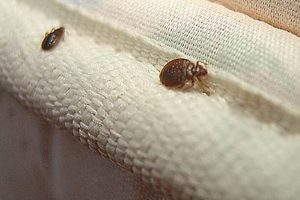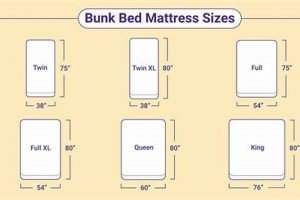A complete bedding solution designed for a queen-sized bed, packaged conveniently for ease of transport and setup, is a consolidated set including a mattress and accompanying bedding essentials. This typically encompasses items such as a mattress, comforter, sheets, pillowcases, and sometimes decorative pillows. The appeal lies in its simplicity; instead of sourcing each bedding component separately, one acquires a coordinated ensemble.
The advantage of this approach is multi-faceted. It offers a streamlined purchasing experience, saving time and effort compared to individually selecting each item. Moreover, the coordinated design ensures a cohesive aesthetic within the bedroom. Historically, bedding was often acquired piece-by-piece, leading to potential style mismatches. This packaged approach simplifies the process and provides a uniform look. The convenience of transport and setup is particularly beneficial for individuals moving to new residences or furnishing guest rooms.
The following sections will delve into the specific components commonly included within such a set, examine the materials and construction techniques employed, and discuss the factors consumers should consider when making a purchasing decision. Furthermore, an overview of common maintenance practices will be provided to extend the lifespan of these bundled bedding solutions.
Purchasing Considerations for a Complete Queen Bedding Set
Selecting a pre-packaged queen bedding ensemble requires careful evaluation to ensure satisfaction. Attention to detail regarding materials, construction, and specific needs is paramount.
Tip 1: Assess Material Composition: Examine the materials used in both the mattress and the bedding components. Look for durable, breathable fabrics such as cotton or linen for sheets, and consider the mattress fill material (e.g., memory foam, innerspring) based on individual comfort preferences.
Tip 2: Scrutinize Thread Count: For sheets and pillowcases, thread count indicates fabric density. While a higher thread count doesn’t always guarantee superior quality, it often suggests a softer and more durable product. A thread count between 300 and 500 is generally considered a good range.
Tip 3: Verify Mattress Dimensions: Confirm the mattress dimensions precisely match the stated queen size specifications (typically 60 inches wide by 80 inches long). Deviations from these dimensions can lead to fit issues with sheets and bed frames.
Tip 4: Evaluate Mattress Firmness: Mattress firmness is subjective, but considering firmness level is essential. Options typically range from plush (soft) to firm. Individuals with back pain may benefit from a firmer mattress, while others might prefer a softer feel.
Tip 5: Inquire About Warranty and Return Policies: Prior to purchase, review the manufacturer’s warranty covering the mattress and bedding. Also, confirm the retailer’s return policy in case the product does not meet expectations upon arrival.
Tip 6: Consider Hypoallergenic Properties: For individuals with allergies or sensitivities, prioritize bedding sets made from hypoallergenic materials. Look for certifications or labels indicating allergy-friendly properties.
Tip 7: Evaluate Comforter Fill Power: If the set includes a comforter or duvet, examine the fill power. Fill power indicates the loft and insulating ability of the fill material. A higher fill power generally indicates a warmer and more luxurious comforter.
By carefully considering these factors, one can make an informed decision when purchasing a packaged queen bedding set, ensuring optimal comfort and value. Proper research and attention to detail are key to a satisfactory purchase.
These considerations provide a foundation for the subsequent sections that will elaborate on specific components, materials, and maintenance procedures.
1. Convenience
Convenience, in the context of a complete queen bedding set, represents a multifaceted benefit encompassing time savings, simplified decision-making, and ease of transportation and setup. It streamlines the process of furnishing a bedroom, shifting from a multi-stage endeavor to a single purchase.
- Simplified Purchasing Process
Instead of individually selecting and sourcing each component mattress, sheets, comforter, pillows a complete bedding set consolidates the process into a single transaction. This eliminates the need to compare multiple brands, materials, and styles across different retailers, saving considerable time and effort.
- Coordinated Aesthetics
A pre-selected bedding set ensures a cohesive and aesthetically pleasing bedroom design. The components are designed to complement each other in terms of color, pattern, and style, removing the guesswork and potential for mismatched items that can arise from separate purchases. This simplifies interior decorating and guarantees a visually harmonious sleep environment.
- Ease of Transportation and Setup
The “bed in a bag” concept further enhances convenience by compressing and packaging all necessary bedding items into a single, manageable unit. This simplifies transportation, particularly for individuals moving to new residences or furnishing guest rooms. Setup is also streamlined, as all components are readily available and designed to fit together without requiring extensive assembly or modification.
- Reduced Decision Fatigue
The sheer number of choices available when purchasing bedding components individually can lead to decision fatigue. A complete bedding set reduces this burden by offering a pre-selected and coordinated solution, eliminating the need to evaluate countless options and reducing the stress associated with decision-making.
These factors collectively contribute to the overall convenience offered by a complete queen bedding set. By simplifying the purchasing process, ensuring coordinated aesthetics, facilitating transportation and setup, and reducing decision fatigue, these sets provide a streamlined and user-friendly approach to furnishing a queen-sized bed, appealing to individuals seeking efficiency and ease of use.
2. Cost-effectiveness
Cost-effectiveness, in the context of a complete queen bedding set, is a pivotal factor influencing purchasing decisions. It encompasses not merely the initial price point, but also the long-term value derived from the product’s durability, included components, and potential savings compared to individual item purchases.
- Reduced Upfront Investment
Bundled bedding sets often present a lower initial cost compared to acquiring each component separately. This aggregation allows manufacturers to streamline production and offer a discounted package price. For instance, a complete set i
ncluding a mattress, comforter, sheets, and pillows may be significantly less expensive than buying these items individually from various retailers. This is particularly beneficial for consumers on a budget or those furnishing a new home. - Elimination of Redundant Purchases
Purchasing bedding components individually can lead to unintentional duplication or mismatched items, resulting in unnecessary expenditure. A complete bedding set mitigates this risk by providing a curated ensemble of essential items, ensuring all components are compatible and effectively utilized. This eliminates the potential for wasteful spending on redundant or unsuitable bedding.
- Extended Product Lifespan and Durability
While the initial price may be attractive, long-term cost-effectiveness hinges on the product’s durability and lifespan. High-quality bedding sets, crafted from durable materials and with robust construction, can withstand extended use and frequent washing. This reduces the need for frequent replacements, ultimately saving money over time. Investing in a set with a longer lifespan offers a greater return on investment compared to cheaper alternatives that require more frequent replacement.
- Potential for Discount Opportunities
Complete bedding sets are often subject to promotional discounts and seasonal sales, providing further opportunities for cost savings. Retailers frequently offer bundled discounts on these sets to incentivize purchases. These promotional periods can present a significant advantage for budget-conscious consumers, allowing them to acquire a comprehensive bedding solution at a reduced price.
The interplay of reduced upfront investment, elimination of redundant purchases, extended product lifespan, and access to discount opportunities collectively underscores the cost-effectiveness of a complete queen bedding set. This approach not only simplifies the purchasing process but also offers a financially prudent option for consumers seeking a comprehensive and coordinated bedding solution. By carefully evaluating the material quality, construction, and included components, consumers can maximize the long-term value and cost savings associated with a packaged bedding set.
3. Coordinated Design
Coordinated design is an integral attribute of a complete queen bedding solution, directly influencing its aesthetic appeal and functional coherence. The “bed in a bag queen mattress” concept leverages coordinated design to offer a streamlined and visually harmonious bedroom environment. The core principle involves pre-selecting all bedding components, such as the mattress, comforter, sheets, and pillowcases, to ensure they complement each other in terms of color palettes, patterns, and overall style. The inclusion of a mattress within this coordinated design framework provides a foundation upon which the aesthetic unity is built.
The importance of coordinated design within this context stems from its ability to simplify the decorating process and guarantee a consistent aesthetic. Instead of separately sourcing individual bedding items, which can lead to style clashes or mismatched color schemes, a “bed in a bag” solution provides a unified package. For example, a set might feature a gray and white geometric patterned comforter, with corresponding gray sheets and decorative pillows that echo the same design elements. This eliminates the guesswork associated with individual purchases and ensures a cohesive visual impact. A poorly coordinated bedding ensemble, in contrast, can detract from the overall ambiance of the bedroom and create a sense of visual disarray.
The practical significance of understanding the coordinated design element lies in its ability to inform consumer purchasing decisions. When selecting a queen bedding set, consumers should prioritize sets that offer a well-executed design scheme, considering the long-term aesthetic impact on their bedroom. Challenges may arise if the chosen design clashes with existing room dcor, highlighting the need for careful consideration of the existing color palette and furniture style. However, a well-chosen, coordinated design can transform a bedroom into a visually appealing and tranquil space, underscoring the value of this integral component.
4. Material Quality
Material quality constitutes a foundational determinant of the overall value and longevity of a complete queen bedding set, including the “bed in a bag” variant. The composition and construction of both the mattress and accompanying linens directly influence factors such as comfort, support, durability, and hygiene.
- Mattress Core Composition and Support
The core material of the mattress, whether innerspring, memory foam, or hybrid, dictates its primary function of providing adequate spinal alignment and pressure relief. Higher-density memory foam, for instance, typically offers enhanced contouring and support, translating to improved sleep quality and reduced back pain. Conversely, low-quality foam may degrade rapidly, leading to sagging and diminished support. Innerspring mattresses rely on the gauge and coil count to determine their firmness and resilience; inferior materials can result in coil breakdown and uneven support distribution.
- Fabric Durability and Breathability
The fabric encasing the mattress and comprising the sheets and pillowcases influences both durability and breathability. Tightly woven, high-thread-count fabrics such as cotton or linen exhibit greater resistance to tearing and pilling, extending the lifespan of the bedding. Breathable materials promote airflow, dissipating heat and moisture to create a cooler and more comfortable sleep environment. Synthetic fabrics, while often less expensive, may lack breathability, leading to overheating and discomfort.
- Fill Material Properties and Allergen Resistance
The fill material used in comforters and pillows impacts their warmth, weight, and allergen resistance. Down and feather fillings offer excellent insulation but may trigger allergic reactions in sensitive individuals. Hypoallergenic synthetic fills, such as microfiber or down alternatives, provide a suitable option for allergy sufferers. The quality of the fill material determines its loft, warmth retention, and resistance to clumping or flattening over time.
- Construction Integrity and Stitching Quality
The method of construction and the quality of stitching employed in the bedding directly affect its structural integrity. Reinforced seams and durable stitching prevent tearing and unraveling, ensuring the bedding withstands regular use and laundering. Poorly constructed seams are prone to failure, reducing the lifespan of the product and potentially compromising its comfort and appearance. The overall fit and finish of the bedding are indicative of the manufacturer’s attention to detail and commitment to quality.
The interplay of these material-related facets significantly shapes the consumer experience with a complete queen bedding set. Prioritizing high-quality materials translates to enhanced comfort, improved support, extended durability, and greater hygiene, ultimately representing a more prudent long-term investment. Conversely, opting for inferior materials may result in compromised sleep quality, accelerated product degradation, and the need for more frequent re
placements, diminishing the overall value proposition.
5. Space Saving
The “bed in a bag queen mattress” concept inherently embodies the principle of space saving, primarily through its compressed packaging and efficient design. This aspect is particularly relevant in urban living environments or smaller residences where storage space is limited. The compression technology employed in packaging these sets significantly reduces the overall volume compared to individually packaged bedding components. This allows for easier transportation, storage within closets or smaller spaces, and streamlined handling upon arrival.
The impact of space saving extends beyond mere storage convenience. Consider an individual furnishing a guest room in a smaller apartment. The “bed in a bag” format eliminates the need to allocate significant space for storing bulky items like a separate mattress, comforter, and multiple sets of sheets. Similarly, individuals relocating frequently find the compact packaging invaluable, reducing moving costs and simplifying logistics. Furthermore, the efficient organization of the included components minimizes clutter and promotes a more organized living space. For instance, a standard queen-sized mattress, uncompressed, can occupy a significant portion of a storage unit, whereas its compressed counterpart significantly reduces the required volume.
In summary, the space-saving characteristic of the “bed in a bag queen mattress” is a direct consequence of its design and packaging. It translates to tangible benefits for consumers in terms of transportation, storage, and organization. Understanding this inherent space efficiency is crucial for individuals seeking practical and convenient bedding solutions, especially in space-constrained environments. Challenges may arise in re-compressing the mattress after initial use; however, the initial space advantage during purchase and transportation remains a significant selling point.
Frequently Asked Questions
This section addresses common inquiries concerning complete queen-sized bedding sets, often referred to as a “bed in a bag queen mattress,” providing clarity and objective information to prospective purchasers.
Question 1: What components are typically included in a complete queen bedding set?
A standard “bed in a bag queen mattress” typically encompasses a queen-sized mattress, a comforter or duvet, a fitted sheet, a flat sheet, two pillowcases, and potentially decorative pillows or shams. The precise contents may vary depending on the manufacturer and the specific product offering.
Question 2: How does the quality of a packaged mattress compare to individually purchased mattresses?
Mattress quality within a “bed in a bag queen mattress” is variable. Some sets incorporate high-quality mattresses constructed from durable materials, while others may prioritize affordability over premium components. Careful examination of the mattress specifications, materials, and warranty information is essential.
Question 3: Is it possible to return a complete bedding set if the mattress is not comfortable?
Return policies differ among retailers and manufacturers. Prior to purchase, verification of the return policy is paramount. Some retailers may offer a trial period or accept returns for comfort-related issues, while others may have stricter limitations.
Question 4: What is the typical lifespan of a “bed in a bag queen mattress” compared to separate bedding items?
The lifespan of a complete bedding set is contingent upon the quality of the materials and the frequency of use. Higher-quality sets, properly maintained, can last several years. However, lower-quality sets may exhibit premature wear and require more frequent replacement.
Question 5: Are “bed in a bag queen mattress” options suitable for individuals with allergies?
Suitability for allergy sufferers depends on the materials used in the bedding. Sets incorporating hypoallergenic materials, such as microfiber or down alternatives, are preferable for individuals with sensitivities. Checking the product specifications for allergy-related certifications is advisable.
Question 6: How should a “bed in a bag queen mattress” be cleaned and maintained?
Cleaning and maintenance instructions vary depending on the materials used in the set. Generally, regular washing of sheets and pillowcases is recommended. Spot cleaning or professional cleaning may be necessary for the mattress and comforter. Adhering to the manufacturer’s care instructions is crucial for preserving the product’s quality.
In summary, understanding the included components, assessing the mattress quality, verifying return policies, considering the lifespan, evaluating allergen suitability, and adhering to proper maintenance protocols are vital for informed purchasing decisions.
The subsequent section will provide a comparative analysis of different brands and product categories within the “bed in a bag queen mattress” market.
Conclusion
This exploration of the “bed in a bag queen mattress” concept has illuminated various facets, from convenience and cost-effectiveness to coordinated design, material quality, and space-saving attributes. A comprehensive evaluation of these elements is essential for discerning consumers seeking to optimize their purchasing decisions within the bedding market. Understanding the nuances of mattress composition, fabric durability, and construction integrity enables a more informed selection process.
The enduring significance of the “bed in a bag queen mattress” lies in its ability to streamline the acquisition of essential bedding components, presenting a practical solution for diverse living situations. As consumer demands evolve, continued advancements in material science and manufacturing processes will likely further refine the quality and value proposition of these packaged bedding solutions. Prospective buyers are encouraged to leverage the insights presented herein to facilitate a judicious and satisfactory investment.


![Best Feather Bed Mattress [Guide] | Ultimate Comfort Organic & Natural Mattress Buyer’s Guide: Non-Toxic Sleep Solutions Best Feather Bed Mattress [Guide] | Ultimate Comfort | Organic & Natural Mattress Buyer’s Guide: Non-Toxic Sleep Solutions](https://mattressworldpa.com/wp-content/uploads/2025/07/th-7153-300x200.jpg)
![Best Split Mattress Beds: Reviews & Guide [Year] Organic & Natural Mattress Buyer’s Guide: Non-Toxic Sleep Solutions Best Split Mattress Beds: Reviews & Guide [Year] | Organic & Natural Mattress Buyer’s Guide: Non-Toxic Sleep Solutions](https://mattressworldpa.com/wp-content/uploads/2025/07/th-7152-300x200.jpg)
![[Protect Bed!] Bed Bath & Beyond Mattress Covers - Deals Organic & Natural Mattress Buyer’s Guide: Non-Toxic Sleep Solutions [Protect Bed!] Bed Bath & Beyond Mattress Covers - Deals | Organic & Natural Mattress Buyer’s Guide: Non-Toxic Sleep Solutions](https://mattressworldpa.com/wp-content/uploads/2025/07/th-7151-300x200.jpg)


